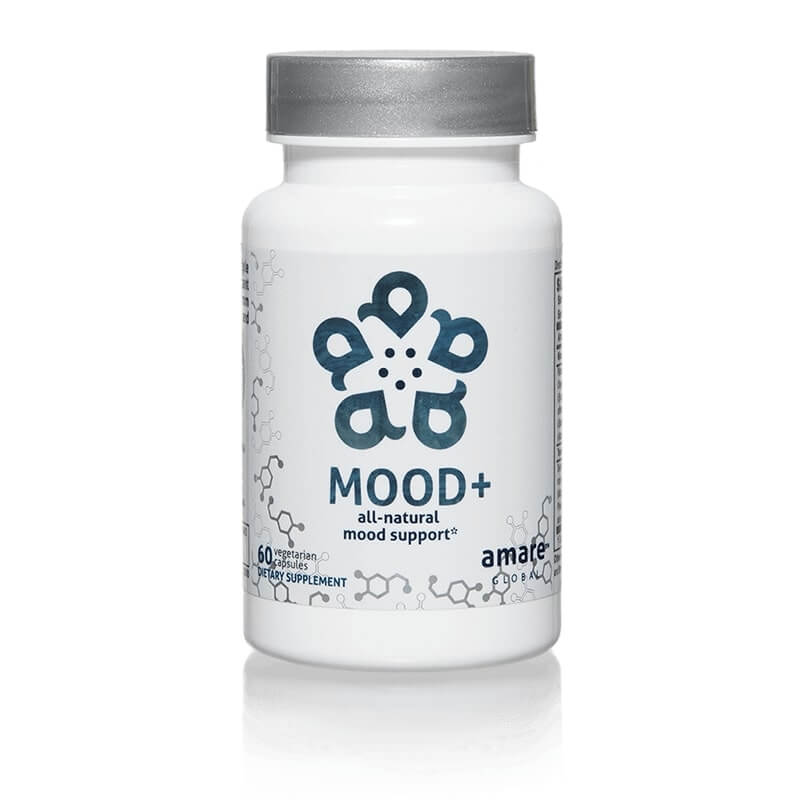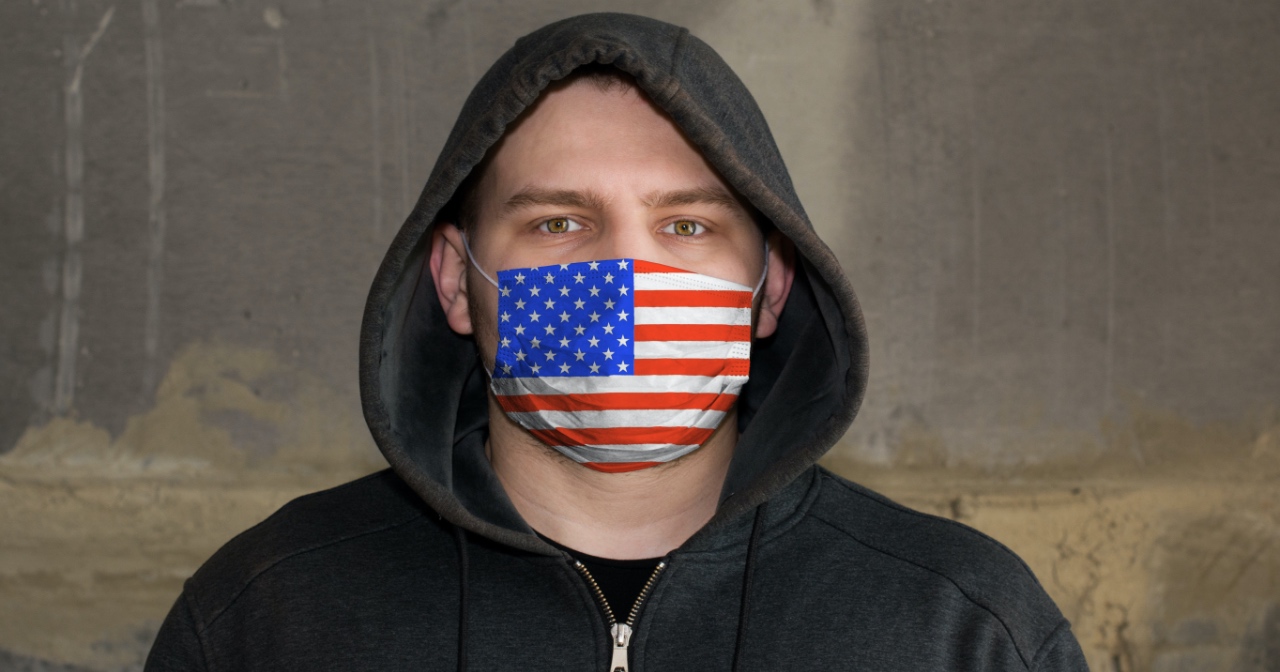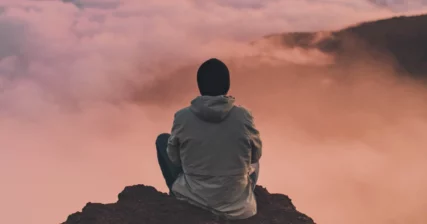Listen on: Apple Podcasts | Spotify
On Sunday, October 30, 1938, Orson Welles presented War of the Worlds as a prime-time radio show. Though the show was introduced as a fictional story, many listeners missed the introduction and tuned in to hear that Martians had landed, killed 7000 National Guardsman, and were attacking cities like New York, Chicago, and St. Louis.
About one million Americans believed the story was real. They went searching for gas masks, evacuated some large cities, and thought the end of the world was at hand.
They acted on emotion before checking the facts. You could say they were emotionally hijacked.
It’s not unlike many people today.
With the media’s help, many people are afraid of encountering an unmasked human being or getting closer than six feet from someone who is masked. They cleanse themselves with hand sanitizer multiple times per day. Some even wear rubber gloves to open their mail or drive their car.
The talking heads of Mainstream Media and far-left politicians have terrified people as well as Orson Welles did in 1938.
Though there is plenty of scientific data to suggest we need not fear the virus, those facts and the people who present them get censored and canceled to avoid their points of view from negating the narrative.
Some might say it’s part of a sinister plan. By causing people to live in fear, they’ll be more willing to give up their freedoms. Maybe many in the media and Democrat politicians are just more afraid, and they’ve projected that fear on the public. Then again, perhaps we’ve wandered down a path of politics, media, and technology that’s led us to become more afraid of something like COVID-19 than we would have been decades prior.

Try Mood+
Mood+ is an advanced, all-natural mood support product that addresses anxiousness, sadness, and restlessness. It includes Sensoril® Ashwagandha, Kanna, Rafuma, and Relora®. Key ingredients in the formula have been clinically shown to:
- Decrease feelings of anger by 42%
- Decrease feelings of sadness by 20%
- Reduce stress-related symptoms by 70%
Why are so many people so scared?
Unless Jesus comes back, we all have a 100% chance of dying at some point. For those who know that this life is not the end, death isn’t so scary.
We’d all like to experience life as long as possible and spend more time with our friends and family, but we know that believers get something even better after this life.
However, as I pointed out in my article A Call to Christians to Stand Up for What’s Good and Against What’s Evil, we’ve seen an abrupt decrease in Christians across America and an equal rise in people who do not identify with any religion or faith. If you believe the end of your life is the end, the idea of dying could be terrifying.
But there is something more to the fact that so many people have jumped on the fear bandwagon without first checking if it was an appropriate response.
A scared minority makes a scared majority.
We live in the country and have many deer visit our backyard. A half dozen could be eating from the feeder together, but if just one gets spooked and runs, the others run with it. The fear of one spreads to the group.
Scientists at Rensselaer Polytechnic Institute discovered that once 10 percent of the population adopts an idea, it spreads like a California wildfire across the entire population. If less than 10 percent hold a belief, nothing happens.
The population of the United States is about 332 million. If two-thirds of the people are adults, that’s about 220 million people. So, you’d need about 22 million people to get scared of a virus for the majority of people to get scared.
Through social media and television influences, it’s easier to fake people into fear than you might realize.
Read also: Unmasked. Unmuzzled. Unvaccinated. Unafraid.
Fear porn
Since the spring of 2020, Mainstream Media has been sensationalizing stories and headlines to draw viewers and readers.
They used footage from Italy to make it appear that a hospital in New York was overwhelmed in chaos. They had hospital staff line up outside a hospital to make it appear people were waiting in long lines to get tested.
They set up tents outside hospitals to make it look like the hospitals were overwhelmed.
They cherry-picked nurses and doctors who described individual cases of people who succumbed to the virus rather than highlighting how the average person overcame the infection.
They dismissed treatments, nutrition, and lifestyle choices that helped reduce the chance of severe infections.
They disregarded the data that showed deaths and hospitalizations from pneumonia, the flu, and COVID-19 were no higher than a typical year of the flu and pneumonia.
What was the point in misleading the public? Fear. There is no other explanation.
When they’re afraid, they tune into the television and social media, looking for answers and truth. And they ignore the advice their grandparents told them when they were young: Television isn’t real life.
It’s not surprising, then, that so many Americans hide in their homes, afraid of an attack by SARS-CoV-2, or suit up with masks, gloves, and disinfectant, as though they’ll be surrounded by lethal viral particles the moment they open the doors of their homes.
Fear conditioning
In Pavlovian fear conditioning research, researchers expose subjects to a neutral conditioned stimulus (CS) like a specific tone and a harmful unconditioned stimulus (US) such as an electric shock.
When exposed to both for a while, the unconditioned stimulus gets removed, and the neutral conditioned stimulus alone is enough to cause a stress or fear response.
For example, the notification sounds on your cell phone might trigger a stress response if you unconsciously associate them with work, a disgruntled in-law, or angry people responding to your social media posts.
What about a mask, Chris Cuomo’s face, or the CNN logo?
For a year, we’ve heard fear-inducing stories about hospitals being overrun by COVID-19 patients, people dying of a disease that sounds like ebola, or grandkids killing their grandparents by showing up for birthday parties. It’s little wonder that so many people now associate everyday living with a vicious, supposedly deadly virus that’s everywhere around us.
Fear conditioning is a form of associative learning. You associate something like a mask on someone’s face with the exaggerated terror of getting COVID-19.
Animal research shows that fear conditioning is learned quickly and may last throughout life.
Think of how many people today could be scared to go to a concert or sporting event, even if they were told it was safe. How many people will feel fear for years to come, just by seeing someone in a face mask?
Imagine how panicked some will feel when they’re in the presence of someone who coughs or sneezes!
The media and left-wing politicians have done a great job of conditioning the public to fear a virus that isn’t much deadlier than influenza.
Fear contagion
When you hear the word contagion, you might immediately think of infections and diseases. Yet, researchers use the word to describe any phenomenon of community spread, including beliefs, emotions, and ideas.
Recent work showed that contagion can characterize (at least partially) the spread of obesity, eating habits, cooperative behavior, generosity, smoking, happiness, smiling, depression, and emotion more generally.
Alshamsi A, et al. Beyond Contagion: Reality Mining Reveals Complex Patterns of Social Influence.
While fear conditioning involves pairing a neutral and a harmful or fear-inducing stimulus, fear contagion is more about the spread of the emotion without a stimulus.
When we sold our Minneapolis loft, we went through a rollercoaster of emotions. It took longer than we anticipated, and we ended up selling for a lot less than we thought we would. On days when Vanessa said, “I think we’re going to get an offer today,” I felt more hopeful and happy. On the days one of us felt discouraged, one’s discouragement left the other feeling the same way.
That’s the way social contagion works.
Social contagion spreads faster from one person to the next when:
- The people are related, familiar, or when they are part of the same group. Your spouse’s emotions, beliefs, or attitudes have a more substantial impact on you than your neighbor’s or co-worker’s emotions, opinions, or attitudes.
- The person spreading the fear has a dominant role or greater authority in the relationship, group, or society. A scared boss, doctor, nurse, governor, or President is more likely to scare others than is someone without a prominent or dominant position. Throughout the COVID Circus, President Trump showed confidence and refused to act panicked or afraid. He knew that’s what leaders do amid uncertainty. Of course, the Democrats condemned him for it, but they seem to know little about leadership.
- When someone is a stranger but shares emotions or empathy with others. If a nurse shares heartbreaking stories of a patient, you’re more likely to get scared of infection than if a newspaper reported just the facts about the case.
Everything up to this point might seem obvious as you read it, especially when you put it in the context of this past year.
But what if you wanted to take this information and manipulate a population? As you can see, with a reasonable level of coordination among politicians and the media, you could easily influence enough people to cause a nationwide shift in beliefs and behaviors.
What if 10% of the population showed confidence and strength instead of fear and weakness?
As I explained above, research shows it only takes 10% of the population to feel afraid of a virus to strike fear in the majority of the rest of the population.
Meanwhile, leaders of companies who know the facts don’t line up with the mask mandates and social distancing rules try to avoid any social pressure, and they demand their customers wear masks as well. Some will probably require their employees to get an unproven vaccine. All this does is reinforce the fear.
But what if a handful of people with clout showed confidence and strength instead? What if they demanded more from the media and their politicians who spread fear instead of facts and impose mandates that have no base in scientific evidence?
What if in 2021, at least 10% of Americans acted like the brave Americans who brought the country through two World Wars, the Great Depression, and numerous other hurdles since 1776? What if we remembered the United States is a republic, where the government works for and is held accountable by the people, rather than the people being ruled by the government?
What if we leveraged social contagion to instill confidence and strength in our family and friends?
What if…?
Photo by Bermix Studio on Unsplash



